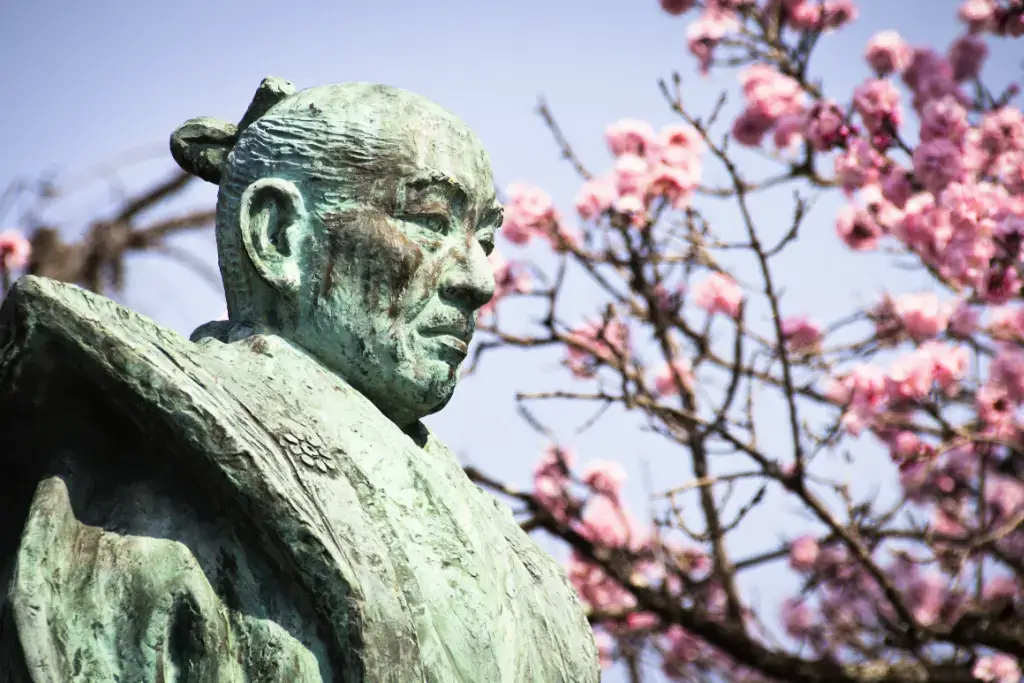Explore the connection between sakura and samurai, embodying Japan’s rich culture and values. Learn about the symbolism of momentary beauty and unwavering strength Moreover, let’s look at how people in the past reflected on the importance of honor, loyalty, and the acceptance of life’s shortness. Discover why samurai blades and sakura petals are so crucial in Japanese tradition! Let’s take a look at the significant connection between samurai and sakura!
Table of Contents
ToggleWhat are sakura?
Sakura, or cherry blossoms, have become internationally famous through their connection to Japanese media. Additionally, cherry trees were gifted by the Japanese government to other countries. These delicate flowers also symbolize the arrival of spring and have become famous for their bloom. Many people stop and stare at the scenes created by cherry blossom trees. As a result, these blossoms hold a more profound cultural significance beyond their beauty, serving as a national emblem for Japan.

Cherry trees symbolize brief moments in life with their short-lived but beautiful blossoms. In Japanese folklore, these trees are sacred and believed to be inhabited by spirits. Sacred cherry trees are also wrapped with ropes called shimenawa, and harming them brings misfortune. Some cherry trees are said to bloom on significant dates or house souls. Another tale speaks of a lonely samurai whose spirit enters a cherry tree, causing it to bloom every year on January 16.
What are samurai?
The samurai, also known as bushi, were Japan’s warriors who later became the ruling military class during the Edo Period. Armed with weapons, samurai lived by the bushido code, emphasizing loyalty and self-discipline. Originating from Heian period campaigns and being hired by the rich, samurai eventually rose to power. Minamoto Yoritomo’s victory in 1192 eventually led to a military government headed by a shogun, beginning samurai rule over Japan for nearly 700 years.

In the warring states era of the 15th and 16th centuries, Japan was under constant war, leading to a high demand for warriors and specialized fighters. The Edo Period brought stability to society, placing samurai at the top. Still, their importance dropped as peace grew in Japan, allowing many to work in government, education, and the arts. The end of Japan’s feudal era in 1868 marked the end of the samurai class and its influence on Japanese society and culture.
Are you looking for some amazing snacks to enjoy this sakura season? Check out Sakuraco! Sakuraco delivers traditional Japanese snacks, teas, and sweets from local Japanese makers directly to your door.
What is the connection between blades and petals throughout history?
The saying “Hana wa Sakuragi, Hito wa Bushi” captures Japan’s respect for cherry blossoms and samurai warriors. Therefore, they symbolize life’s fleeting beauty and warriors’ bravery. Originating before the Edo Period, this proverb reflects the cultural significance of sakura and samurai in Japanese society. With their brief yet stunning bloom, Cherry blossoms served as a symbol for samurai during the Edo Period, highlighting the shortness of their lives as warriors.

Additionally, the deep connection between samurai culture and cherry blossoms is evident in their shared symbolism of grace, purity, and acceptance of impermanence. Samurai upheld the bushido code, embodying principles of honor and discipline, much like the elegant yet short-lived cherry blossom. Traditional cherry blossom viewing, or hanami, symbolizes the samurai spirit of embracing life’s fleeting moments with gratitude and reflection.
The Samurai Town Called Sakura

Did you know there’s a town in Chiba Prefecture called Sakura City that has a strong samurai heritage? Once a castle town during the Edo period, Sakura keeps connections to its past, especially in its Samurai District. Visitors can walk through streets with traditional samurai residences, providing a glimpse into their lives. Landmarks like the former Kawara, Tajima, and Takei family houses offer a look into the customs and lifestyles of the samurai.
Why is the connection between samurai blades and sakura petals meaningful?
The connection between samurai blades and sakura petals is essential because it reflects Japanese culture, blending the strength and discipline of the samurai with the delicate beauty and momentary nature of cherry blossoms. This connection reflects values of honor, loyalty, and accepting life’s short moments. Samurai blades symbolize strength and grace, crafted with meticulous precision as if to reflect the elegance of cherry blossoms.

Furthermore, the association between samurai and cherry blossoms carries historical and spiritual significance, representing a connection between nature and human existence in Japanese society. The shared grace and purity are a reminder to treasure each moment, just like the spirit of bushido embraced by the samurai. The connection between samurai blades and sakura petals highlights the beauty and wisdom in Japanese tradition.
Moreover, the Japanese culture’s connection between sakura and samurai symbolizes bravery, respect, and appreciation for life’s fleeting beauty. This union reflects values such as honor, loyalty, and appreciation of life. The link between samurai blades and sakura petals shows the connection between strength and grace, reminding us to treasure each moment as the samurai did. Do you know the link between samurai and sakura? What new things did you learn? Let us know in the comments below!










